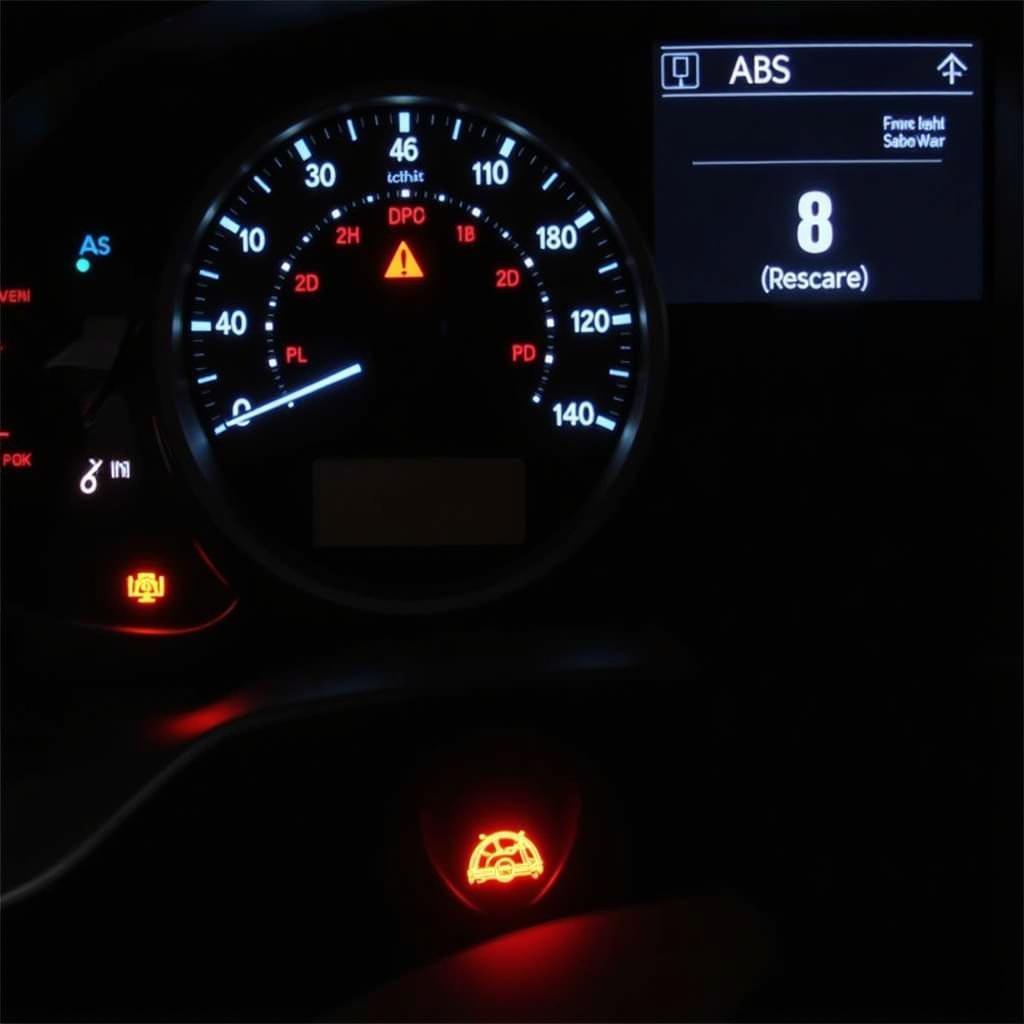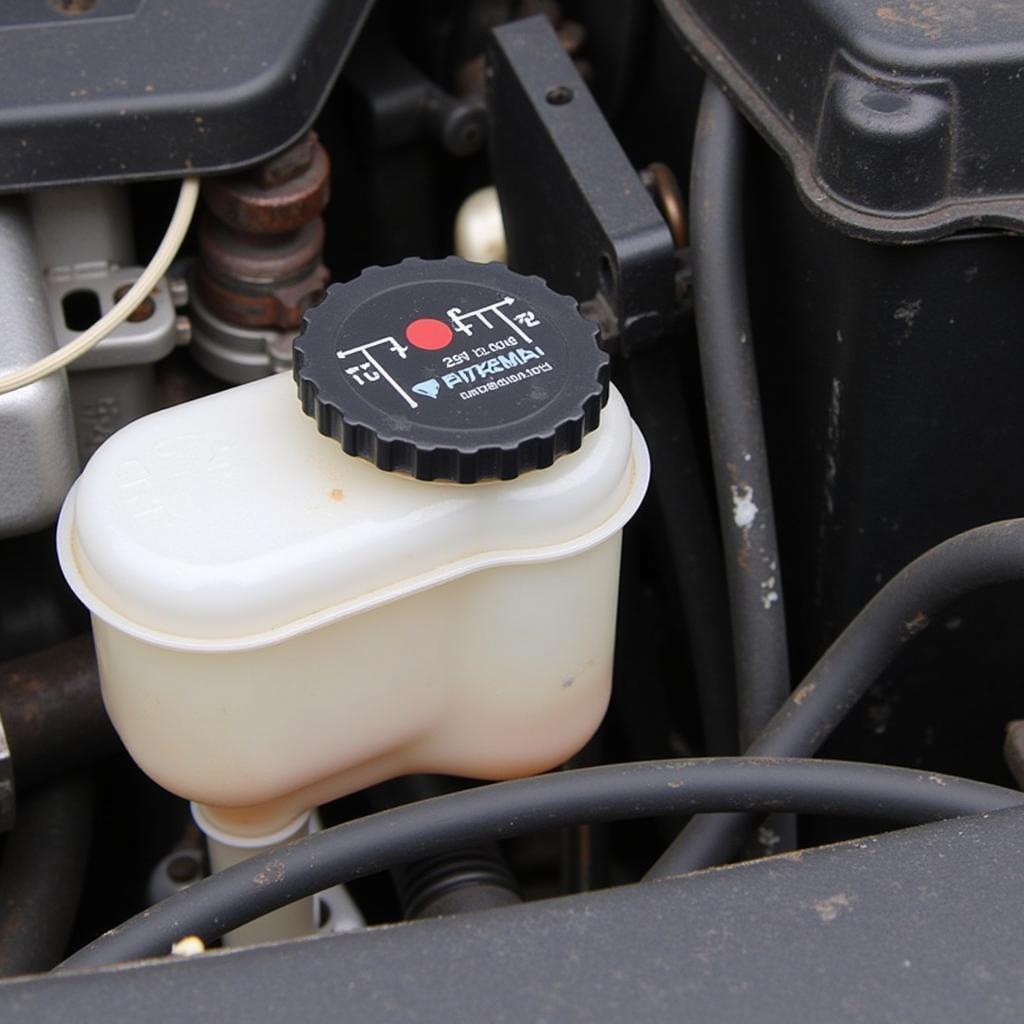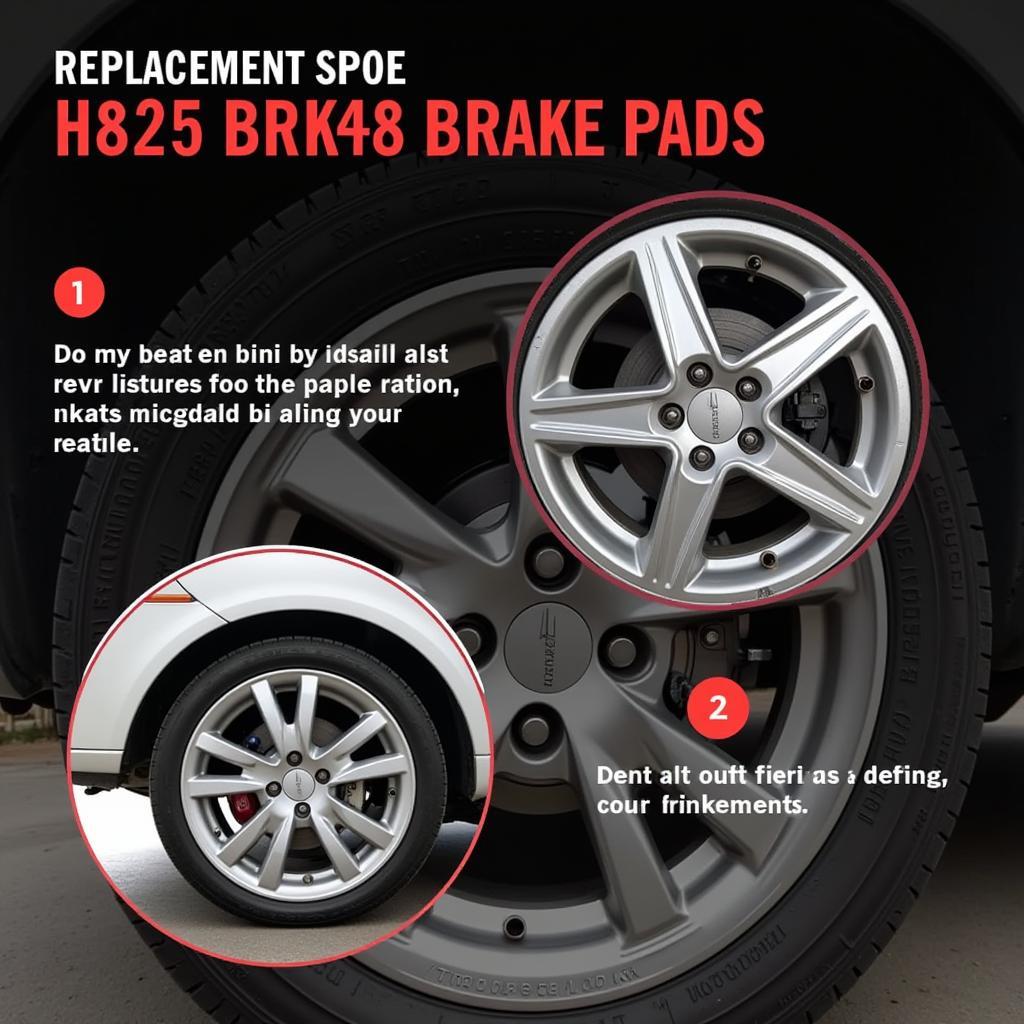Ford Escape brake warnings can be alarming, but understanding their meaning and how to troubleshoot them can save you time, money, and potential danger. These warnings, often displayed on your dashboard, signal a potential issue with your braking system, ranging from low brake fluid to more complex problems. This article will help you decipher those warnings, guide you through some initial troubleshooting steps, and explain when professional help is necessary.
Common Ford Escape Brake Warnings
Your Ford Escape uses a sophisticated system to monitor brake health. Several warnings can illuminate your dashboard, each indicating a specific problem:
- Brake Warning Light: This general warning light can indicate various issues, from a simple parking brake engagement to more severe problems like low brake fluid or a malfunctioning ABS system.
- ABS Warning Light: This light specifically indicates a problem with the Anti-lock Braking System (ABS). While your brakes may still function, the ABS might not engage during hard braking, potentially leading to skidding.
- Low Brake Fluid Warning: This warning signals that your brake fluid level is critically low. Ignoring this can lead to brake failure.
- Parking Brake Warning: This usually indicates that your parking brake is engaged. While straightforward, driving with the parking brake on can cause significant damage.
Troubleshooting Ford Escape Brake Warnings
Before rushing to a mechanic, some basic troubleshooting can help you understand the nature of the problem:
- Check the Parking Brake: Ensure the parking brake is fully disengaged. This often resolves the basic brake warning light.
- Inspect Brake Fluid Level: Locate the brake fluid reservoir under the hood and check the fluid level. If it’s low, add the correct type of brake fluid as specified in your owner’s manual.
- Check for Leaks: Look for any signs of brake fluid leaks around the brake lines, calipers, and master cylinder. Leaks indicate a more serious issue requiring professional attention.
- Listen for Unusual Noises: Grinding or squealing sounds when braking can signal worn brake pads or other mechanical issues.
After the parking brake, the next common issue is a low brake fluid warning. Often, this is a simple fix by topping off the fluid. However, consistently low fluid indicates a leak somewhere in the system, requiring professional diagnosis and repair. 2012 f250 brake fluid low warning af provides useful information about brake fluid issues.
 Ford Escape Brake Warning Lights on Dashboard
Ford Escape Brake Warning Lights on Dashboard
When to Seek Professional Help
While basic checks can be helpful, certain situations warrant immediate professional attention:
- Persistent Warning Lights: If a warning light remains on even after addressing the apparent issue, it indicates a deeper problem requiring diagnosis.
- Brake Fluid Leaks: Any signs of brake fluid leakage require immediate professional repair. Leaks compromise braking performance and can lead to dangerous situations.
- Soft or Spongy Brake Pedal: If your brake pedal feels soft or spongy, it could indicate air in the brake lines or a failing master cylinder. This requires immediate professional attention.
- Unusual Noises or Vibrations: Grinding, squealing, or vibrations during braking can signify worn brake components or other issues needing professional repair.
Modern vehicles like the Ford Escape rely on complex electronic systems. Diagnosing these requires specialized equipment and knowledge. Attempting complex repairs yourself can exacerbate the problem.
 Mechanic Inspecting Ford Escape Brake System
Mechanic Inspecting Ford Escape Brake System
“Ignoring brake warnings is a recipe for disaster,” warns John Smith, ASE Certified Master Technician. “Even seemingly minor issues can escalate quickly, compromising your safety and potentially leading to costly repairs.”
Why are Ford Escape Brake Warnings Important?
Ignoring Ford Escape brake warnings is dangerous. Your braking system is crucial for safety, and these warnings are designed to alert you to potential problems before they become serious. Addressing these warnings promptly can prevent accidents and costly repairs.
How do I reset my Ford Escape brake warning light?
Resetting the brake warning light typically involves fixing the underlying issue that triggered the light in the first place. Once the problem is resolved, the light should turn off automatically. However, some issues may require a diagnostic scan tool to reset the light.
What does the red brake light mean on a Ford Escape?
The red brake light usually indicates a serious issue with your braking system, such as low brake fluid or a malfunction in the system.
“Regular brake inspections are vital for maintaining safety and preventing costly repairs,” adds Jane Doe, Lead Automotive Engineer at XYZ Automotive Solutions. “Catching potential problems early can save you time, money, and ensure a safe driving experience.”
 Checking Ford Escape Brake Fluid Reservoir
Checking Ford Escape Brake Fluid Reservoir
Conclusion
Ford Escape brake warnings are essential safety indicators. Understanding their meanings and taking prompt action is crucial. While some simple troubleshooting can help, always consult a qualified mechanic for persistent issues or complex repairs. Addressing brake problems early ensures your safety and prevents costly damage down the road. Don’t ignore those warnings; they’re there for a reason.
FAQ
- Can I drive my Ford Escape with the ABS light on? While you can still drive, the ABS functionality will be disabled, potentially increasing the risk of skidding during hard braking. Seek professional diagnosis and repair.
- How often should I check my Ford Escape’s brake fluid? It’s recommended to check your brake fluid level at least once a month.
- What type of brake fluid should I use in my Ford Escape? Consult your owner’s manual for the correct brake fluid type and specifications.
- How much does it cost to replace brake pads on a Ford Escape? The cost varies depending on factors like location and the specific parts used. Consult a local mechanic for an accurate estimate.
- Can worn brake pads trigger a brake warning light? While worn brake pads might not directly trigger the main brake warning light, they can cause other issues that might indirectly activate it. They can also trigger specific warning systems depending on the model year and features of your Ford Escape.
- How long can I drive with a low brake fluid warning? You should not drive with a low brake fluid warning. Add fluid immediately and have the system checked for leaks.
- What should I do if my brake pedal feels spongy? This indicates a serious problem, potentially air in the brake lines. Do not drive and seek immediate professional help.

